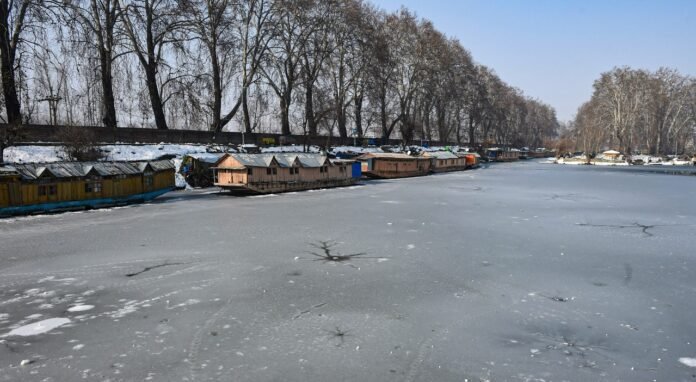
40-day-long harsh winter spell is underway, impacting the regular lives of Kashmir’s residents, but everything has pros and cons. The following information has been shared by Indian Weather forecasting services.
The Dal lake, located in the Srinagar district of Kashmir, is frozen, and numerous visitors are arriving at the spot to explore the freezing lake. It’s an urban lake and the second-largest lake in Jammu and Kashmir.
Dal Lake is one of the most visited places in Srinagar by tourists and locals. Since it was frozen due to Chillai-Kalan, a considerable boost in the number of tourists has been observed, a good sign for Kashmir’s citizens whose businesses rely on the tourism sector.
Numerous tourists arrived at Frozen lake and shared several pictures of the spot to share their experience on their visit to Dal Lake, currently frozen in various parts due to the ongoing cold Wave, which also affected the other regions nearby.
Weather forecast services highlighted that Chillai Kalan was started on December 21, 2022, and resumed until January 31. The Cold Wave is also followed by a 20-day-long Chillai-Khurd that is expected to occur between January 31 and February 19.
They also warned that another face of the cold Wave known as Chillai-Bachha with ten days duration expected to begin from February 20 to March 02. The Cold Wave usually brings snowfall, a significant reason to convert the water bodies into solid ice as the temperatures drop below sub-zero temperatures.
It was recognized as the most intense part of the winter session as a large amount of snow gathered on roads, making it difficult for transportation to continue their services according to the planned schedule.
On the other hand, it also has some advantages, as the cold temperatures and snowfall attract numerous tourists throughout the country, especially from the southern part of the country where the temperatures remain hot and almost normal in winter months.
Chillai-Kalan has boosted Kashmir’s tourism by freezing the Dal lake, raising snowfall and dropping temperatures. Such elements attract numerous tourists who love to explore cold regions and witness the snowfalls.